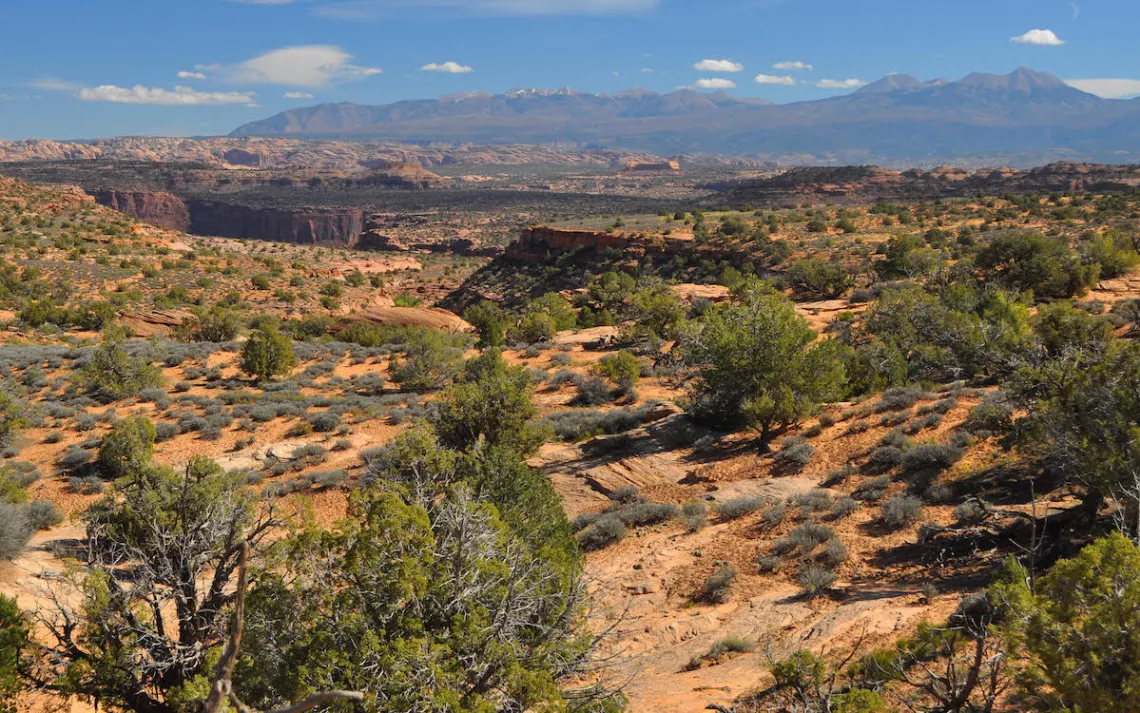Fossil Fuel Free-for-All Begins on Utah’s Public Lands
The Interior is leasing land near national monuments for oil and gas development

Photo courtesy of Southern Utah Wilderness Alliance
On Tuesday, the Interior Department began auctioning 51,000 acres of public land in southeastern Utah for oil and gas development. Among the parcels up for sale are some near Hovenweep, Canyons of the Ancients, and Bears Ears National Monuments.
In December 2017, the Trump administration significantly reduced the boundaries of Bears Ears National Monument, despite a federal review that indicated overwhelming public support for its continued protection. Though Interior Secretary Ryan Zinke insisted that rolling back protections for Bears Ears was “not about energy,” the New York Times released emails from Interior staffers showing that access to the oil, gas, and uranium deposits in Bears Ears were central to Zinke’s decision. The lease sales still went ahead even after that revelation, showing what the Trump administration means by “energy dominance.”
Environmental and tribal groups are blasting the sales. “Oil and gas development has been a curse for Native Americans in San Juan County,” says Mark Maryboy, a board member for Utah Diné Bikéyah, a Native American organization that has lead the activist push against the attacks on Bears Ears. “It is obvious that the Trump administration and the BLM are advancing the agenda of global corporations at the expense of native people.”
Conservationists are not only worried about the threatened national monument lands; they're criticizing lease sales in Alkali Ridge that could threaten uncataloged artifacts as well as parcels near the Green and San Juan Rivers that could impact both endangered fish and outdoor recreation businesses by polluting the rivers and using the water for fracking.
“The areas for the lease parcels have extremely high cultural and archaeological density that the Bureau of Land Management hasn’t taken time to inventory or document,” says Landon Newell, staff attorney with the Southern Utah Wilderness Alliance (SUWA). Newell adds that there are parcels up for sale in areas like Goldbar Canyon, Labyrinth Canyon, and Cross Canyon that the BLM had previously identified as possessing wilderness characteristics. “Development of any kind in those areas destroys the wilderness characteristics, and then they lose the opportunity to be protected under the Wilderness Act.”
In January, a coalition of conservation groups led by SUWA formally protested the BLM’s decision to auction off these lands. The BLM moved forward with the sale without formally responding, citing in their announcement about the lease sales their completed environmental assessment and determination of National Environmental Policy Act (NEPA) adequacy for the parcels.
This isn’t the first time the BLM has swept such concerns under the rug. When the National Park Service sought to defer the lease of parcels near Hovenweep over concerns about possible effects on clean air, scenic views, soundscapes, and dark night skies, the BLM noted the agency’s concerns, but declined to remove the parcels from the sale.
“The BLM has got the whole process backwards,” Newell says. The agency based its environmental assessment and NEPA determination on existing reviews that took a broad view of the area, he asserts, and left site analysis for when there are specific proposals to develop on the leases. “The push is clearly to open as much area up as possible,” he says, “and to do it as quickly as possible in that push for energy dominance.”
Local officials see oil and gas leasing as an opportunity to increase economic opportunities in San Juan County, where 27.6 percent of people live below the poverty line. “Our county relies heavily on the extractive industry for our tax base, so any time we can get the possibility of new extraction, it can have a definitive impact on our county,” says Bruce Hamilton, chairman of the San Juan County commissioners.
The oil and gas industry may be taking advantage of this opportunity to lock up leases without substantially increasing production—especially in Utah. BLM records show that of the 2.9 million public acres leased for oil and gas development in the state, only 1.2 million acres are currently in production. According to the Center for American Progress, the Trump administration leased 59 percent of available BLM parcels in 2018 for the minimum price of $2 per acre. The Congressional Budget Office shows that developers drill on only 8 percent of leases sold for $10 per acre or less, meaning that the industry is hoarding public lands with little intention of drilling on them in the foreseeable future.
“Part of it comes down to financial viability at the moment—oil and gas companies are leasing the land in case they need it, but they have high levels of development as it is,” says Ashley Soltysiak, the Sierra Club's Utah Chapter director. “Since they have a stockpile of land at their disposal, we don’t see these lease sales as necessary.”
Environmental groups hope that raising such concerns can still prevent the lease sales from going forward. Earlier this month, Zinke deferred lease sales in New Mexico and Montana after local and national advocates spoke out against them.
“We’ve seen oil and gas leasing deferred in other areas,” Soltysiak says. “I think if we provide enough pressure, there’s certainly potential for that here in Utah.”
 The Magazine of The Sierra Club
The Magazine of The Sierra Club



